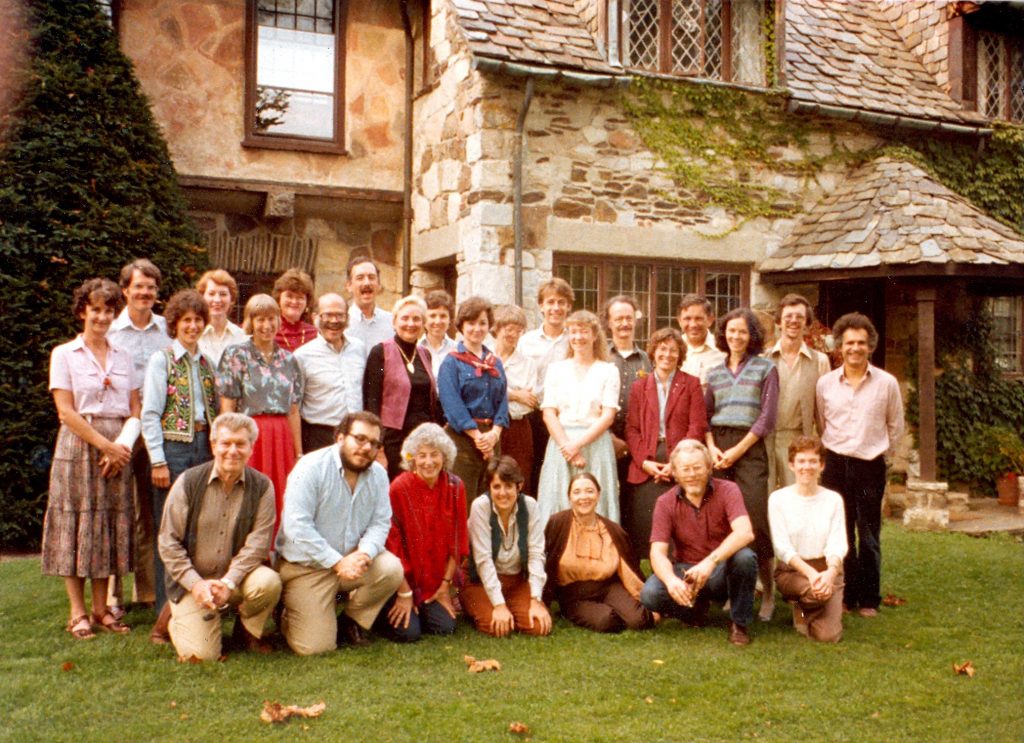Cloth and the Organization of Human Experience
Date
Sep 28 - Oct 5, 1983Organized by
Jane Schneider and Annette WeinerLocation
Troutbeck Inn, Amenia, New YorkPublications
Cloth and Human Experience (A.B. Weiner and J. Schneider, Eds.) Smithsonian Institution Press, Washington, DC, 1989.Participants
- Monni Adams Harvard University, USA
- Lisa Aronson University of Wisconsin, Stevens Point, USA
- Ruth Barnes University of Oxford, UK
- Susan Bean Peabody Museum of Salem, USA
- T.O. Beidelman New York University, USA
- Maurice Bloch London School of Economics, UK
- James Boon Cornell University, USA
- Bernard Cohn University of Chicago, USA
- Louise Cort Smithsonian Institution, USA
- Patricia Darnish Indiana University, USA
- Warren D’Azevedo University of Nevada, USA
- Joanne Eicher University of Minnesota, USA
- Gillian Feeley-Harnik Johns Hopkins University, USA
- Diane Owen Hughes University of Michigan, USA
- Billie Jean Isbell Cornell University, USA
- Ivan Karp Indiana University, USA
- H. Leedom Lefferts Drew University, USA
- Shirley Lindenbaum New School for Social Research, USA
- Kathryn S. March Cornell University, USA
- Mattison Mines University of California, Santa Barbara, USA
- Lita Osmundsen Wenner-Gren Foundation, USA
- Jane Schneider City University of New York, Graduate Center, USA
- Linda Stone-Ferrier University of Kansas, USA
- Constance Sutton New York University, USA
- Richard C. Trexler State University of New York, Binghamton, USA
- Maude Southwell Wahlman University of Mississippi, USA
- Ronald Waterbury City University of New York, Queens College, USA
- Annette Weiner New York University, USA
- Jason Williams New York University, USA
ORGANIZER’S STATEMENT: Throughout history, cloth has furthered the organization of social and political life. Cloth and Human Experience brings to light the properties of cloth that underlie its social and political contributions, the ritual and social domains in which people acknowledge these properties and give them meaning, and the transformations of these meanings over time.
Cloth can take on many shapes and decorative variations. Whether through the patterned weaving of colored warps and wefts, or through embroidery, staining, painting, or dyeing, cloth’s potential for differentiation seems endless. It can be worn, exchanged, or displayed to denote age, gender, rank, status, and group affiliation. Complex normal and ethical issues related to dominance and autonomy, opulence and poverty, continence and sexuality, find ready expression through cloth. But as much as cloth discloses, it can also conceal, covering differences through uniforms or sack cloth, or disguising identities through costumes and masks.
Cloth and Human Experience is a collection of thirteen essays by art historians, historians, and anthropologists who probe the social and political significance of cloth in both small-scale and industrial societies. The volume offers great geographic breadth, with studies on Africa, India, Melanesia and Polynesia, Madagascar, Indonesia, Japan, Mexico, Peru, and Europe at the beginning of industrialization.
Wenner-Gren Symposium #93
